|
NEWS

SERBIA - THE CULTURAL BRIDGE BETWEEN EAST AND WEST
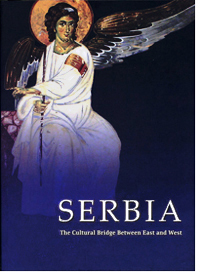 The book was prepared for the exhibition Serbia – The Cultural Bridge Between East and West, which was organized, under esteemed patronage from the President of the Republic of Serbia and the President of the Republic of Austria, from June 30th to October 30th 2010 by the Museum of St. Stephen's Cathedral in Vienna and Matica Srpska, on the occasion of 150th anniversary of the founding of the Saint Sava Orthodox Church Municipality in Vienna. Since November 2010 free access to the full text has been enabled. The book was prepared for the exhibition Serbia – The Cultural Bridge Between East and West, which was organized, under esteemed patronage from the President of the Republic of Serbia and the President of the Republic of Austria, from June 30th to October 30th 2010 by the Museum of St. Stephen's Cathedral in Vienna and Matica Srpska, on the occasion of 150th anniversary of the founding of the Saint Sava Orthodox Church Municipality in Vienna. Since November 2010 free access to the full text has been enabled.
Serbs have, for centuries, inhabited the territory on which different civilizations have converged and permeated each other. Divisive European cultural plates have, in times of civilizational tectonic movements, often divided Serb people. One thousand years ago, one segment of the national corpusfound itself in the cultural sphere of Byzantium and Orthodoxy. The other segment lived in the Mediterranean hinterland and Mediterranean cities, developing under the influence of western culture and Catholicism. Subsequently, following the Ottoman breakthrough into the Balkans, the greater part of Serb people remained in Serbia, under the influence of eastern culture, while the other, during multiple centuries of migrations, sought and received sanctuary in the Habsburg Empire and the Venetian Republic. A new wave of migrations and new divisions took place during the twentieth century when the Iron Curtain was drawn. Even though the Yugoslav Federation developed the so-called soft socialism model, with a social organization which to a great extent resembles the current idea of civic society, a great number of Serbs, in search of business and a higher living standard, found themselves in the West.
Over time, surfaced a cloudy, unclear and incomplete image of Serbs as a warrior nation, which managed to conquer a significant part of Byzantium and which, for centuries, defended Central and Western Europe from the Turkish conquerors. Contemporaries only recognize Serbs as being successful in sports, or as merchants, craftsmen, and workers. Only a few people know that the Serb people played a significant role in the fields of culture and science, while connecting different civilizations and their achievements.
It is generally considered that the nature and direction of the development of Serbian culture was determined long ago by the medieval educator and founder of the autocephalous Serbian Orthodox Church, Rastko Nemanjić – St. Sava (1175-1235), who saw Serbia, in his speeches and writings, as a bridge connecting the eastern and western parts of the world. Time has confirmed the value of his ideas. During a period that lasted for many centuries, and under the influence of Byzantium, Turkey, Russia and countries of Central and Western Europe, a specific culture originated representing the bridge between the East and the West. This culture, however, does not represent a mere combination of different foreign traditions, but a new culture of great spiritual value recognized specifically through Serbian Orthodoxy (Svetosavlje), unique architectural style, unique Serbian Cyrillic alphabet, rich literature, distinctive philosophy of life within which elements of eastern collectivism and western individualism interlace, rich history of endowments, and a significant contribution to science and fine arts.
The following pages present the twelve centuries-long political history of Serbia, which has significantly contributed to the developmental direction Serbian culture has taken. This is followed by a presentation of main eras in the development of art and its most significant characteristics. The presentation does not include the period during which Serbia formed part of the common state of South Slavs (Yugoslavia). The detailed presentation of important eras is complimented by a series of short articles presenting individual fields in which the Serb people contributed to the development of European and global culture. All articles represent personal opinions of the authors. At the end, there is a catalogue of works of art which provide examples of Serbian culture. In that context, individuals who have marked the history of the Serb people are presented.
Back to top

INTERNATIONAL SCIENTIFIC CONFERENCE
BUILDING CULTURAL NATIONS:
THE MATICA AND EQUIVALENT INTERMEDIARY STRUCTURES IN EUROPE
Budapest, 15th and 16th February 2012
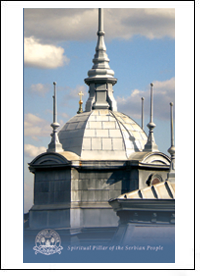 In Budapest, at the Central European University, international scientific conference: Building cultural nations: The matica and equivalent intermediary structures in Europe,,was held on the 15th and 16th February (the day Matica Srpska was founded). The organizers: SPIN – Dutch National Research Institute for Cultural History, University of Amsterdam (The Netherlands), NISE – National movements and intermediary Structures in Europe, Antwerp (Belgium) and CEU – Central European University, Budapest (Hungary), pointed out that “never before has the institution of Matica been analyzed in such a comprehensive, comparative manner” as during this two-day event. Matica Srpska, founded in Pest in 1826, which was a model for other Slavic nations, was in the focus of the interest. The oldest cultural and scientific institution of the Serbian nation was a model after which the following Maticas were founded: Czech Matica in 1831, Illyrian Matica in 1842 (which was Renamed as Croatian Matica in 1874); Sorbian Matica in 1847; Galician-Ruthenian Matica in Lviv in 1848; Moravian Matica in 1849; Dalmatian Matica in Zadar in 1861; Slovakian Matica in 1863; Slovenian Matica in 1864; Opavian Matica in 1877 and Teschen Matica in 1898 (from which the Silesian Matica was formed in 1868); Polish Matica in Lvov in 1882; School Matica in Teschen in 1885; School Matica in Warsaw in 1905; Bulgarian Matica in Constantinople in 1909 and the New Bulgarian Matica in 1989. In Budapest, at the Central European University, international scientific conference: Building cultural nations: The matica and equivalent intermediary structures in Europe,,was held on the 15th and 16th February (the day Matica Srpska was founded). The organizers: SPIN – Dutch National Research Institute for Cultural History, University of Amsterdam (The Netherlands), NISE – National movements and intermediary Structures in Europe, Antwerp (Belgium) and CEU – Central European University, Budapest (Hungary), pointed out that “never before has the institution of Matica been analyzed in such a comprehensive, comparative manner” as during this two-day event. Matica Srpska, founded in Pest in 1826, which was a model for other Slavic nations, was in the focus of the interest. The oldest cultural and scientific institution of the Serbian nation was a model after which the following Maticas were founded: Czech Matica in 1831, Illyrian Matica in 1842 (which was Renamed as Croatian Matica in 1874); Sorbian Matica in 1847; Galician-Ruthenian Matica in Lviv in 1848; Moravian Matica in 1849; Dalmatian Matica in Zadar in 1861; Slovakian Matica in 1863; Slovenian Matica in 1864; Opavian Matica in 1877 and Teschen Matica in 1898 (from which the Silesian Matica was formed in 1868); Polish Matica in Lvov in 1882; School Matica in Teschen in 1885; School Matica in Warsaw in 1905; Bulgarian Matica in Constantinople in 1909 and the New Bulgarian Matica in 1989.
The aim of the conference was to integrate knowledge and information on the origins, founding, ideas, aims and practice of these institutions, their mutual influence and especially on their contribution to the nation-building process which took place in Europe during the 19th century, in a single forum, through lectures and discussions. By using the comparative approach organizers tried to accentuate transnational aspects in the founding and activities of these organizations and to establish a platform for further research. Among other, it was stated that the model of social self-organization in the field of culture and science, which was developed in maticas, could be applied in the wider European region as part of the development of a civil society and efforts to secure stabile sources of financing and normal functioning of institutions in the period of economic crisis through charity and work in the public interest.
About thirty scientists from 16 countries took part in the conference. Among participants were professors and researchers from universities and scientific institutions from Amsterdam (the Netherlands), Leuven, Ghent and Antwerp (Belgium), Bologna and Florence (Italy), Dublin (Ireland), Montpellier and Tours (France), Prague (Check), Aberystwyth (Wales, Great Britain), Goettingen and Chemnitz (Germany), Warsaw (Poland), Lviv (Ukraine), Bratislava (Slovakia), Skopje (Macedonia), Budapest (Hungary), and Novi Sad (Serbia).
The Secretary General of Matica Srpska, prof. Dušan Nikolić, as the representative of the oldest matica, received the honor of opening the working part of the conference with his paper.
Matica Srpska prepared a promotional exhibition presenting its most significant activities in the fields of culture and science, as well as its latest, major publications. Basic information on the institution was made available to the participants of the conference in the form of banner and other promotional material which was prepared in seven languages.
Back to top

MARKING OF SAVA TEKELIJA'S ANNIVERSARY IN BUDAPEST
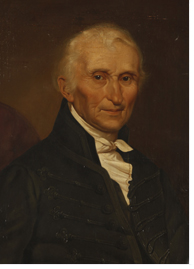 Matica Srpska, the Embassy of the Republic of Serbia in Budapest and the Serb Self-Government in Hungary are organizing celebration of the 250th anniversary of the birth of Sava Popović Tekelija, the great philanthropist, first Serb doctor of laws and President of Matica Srpska. The celebration will be held at the Embassy of the Republic of Serbia in Budapest on May 19, 2011 at 7:00 pm. Matica Srpska, the Embassy of the Republic of Serbia in Budapest and the Serb Self-Government in Hungary are organizing celebration of the 250th anniversary of the birth of Sava Popović Tekelija, the great philanthropist, first Serb doctor of laws and President of Matica Srpska. The celebration will be held at the Embassy of the Republic of Serbia in Budapest on May 19, 2011 at 7:00 pm.
Guests will be greeted by H.E. Mr. Dejan Šahović, Ambassador of the Republic of Serbia, Academy Member Čedomir Popovic, President of Matica Srpska and Mr. Ljubomir Aleksov, President of the Serb Self-Government in Hungary.
Prof. Dr. Dušan Nikolić, General Secretary of Matica Srpska, will give a commemoration address on Sava Tekelija.
A musical number will be performed by the TAJJ string quartet (Aleksandra Krčmar Ćulibrk, violin; Jovanka Mazalica, violin; Jelena Filipović, viola and Timea Kalmar, cello) from Novi Sad, with the following programme: Aleksandra Vrebalov: Draft No. 2.; Dmitry Shostakovich: String Quartet No. 3. Op. 73. ; Dejan Despić: Homage to Stevan Mokranjac and Aleksandra Vrebalov: Pannonia Boundless.
SAVA POPOVIĆ TEKELIJA
A nobleman, the first Serbian doctorate in Law, a benefactor, a president of Matica Srpska Society
(Arad, 17/28 August 1761 – Arad, 21 September/3 October 1842)
Sava Popović Tekelija comes from a famous Serbian family of noblemen. His great grandfather Jovan led frontier military units in 1697, which significantly contributed to the victory of Price Eugene of Savoy in the battle against Turks near Senta. In 1706 he was awarded a hereditary title of a nobleman because of his military merits. In the family there were other famous people. One of the best known is Sava's uncle Petar Tekelija, a general in the army of the Russian Empress Catherine the Great.
Sava Tekelija was first educated in a Serbian and then in a Latin school in Arad. He attended the Senior Grammar School in Buda. In the meantime he had attended the classes of rhetoric. He studied law in the University of Vienna and he learnt French, Italian and Spanish. He also attended natural sciences classes, where he studied anatomy, chemistry, botany and mathematics. At the same time he acquired some education in music. He finished his studies of law at the University of Budapest in 1785 and there he defended his doctoral thesis entitled De causa et fine civitatis (On the Cause and Purpose of the Existence of the State) the following year, thus becoming the first Serbian PhD of Legal Sciences. The thesis was written in the spirit of the French legal encyclopedistics and enlightenment, under the influence of the philosophy of Jean Jacques Rousseau. .
Sava Tekelija supported in various ways the rebels in Serbia who fought for the liberation from Turks, which had lasted for several centuries. In 1805 he translated the book Romans in Spain by Watson and in the preface he presented his programme for the renewal of the Serbian state.
Following the ideas of French educators he actively worked on the education of the people. He thought that a strong intellectual elite should be formed in order to re-connect the Serbian people with European trends. His educational mission and charitable activities coincided to a great extent with the aims of Matica Srpska, which had been founded in Budapest in 1826 by a young doctorate student Jovan Hadžić (a senator of the Magistrate of Novi Sad, an author of the Serbian Civil Law from 1844) and a group of rich businessmen: Đorđe Stanković, Josif Milovuk, Jovan Demetrović, Gavrilo Bozitovac, Andrija Rozmirović and Petar Rajić. In 1838 Sava Tekelija was elected the President of Matica Srpska, which was one of the most significant events in the history of the Serbian people. He interceded for Matica Srpska to become a scientific society. Because of that Matica Srpska today has seven scientific departments. He played a crucial role in the formation of a rich library fund which was the basis of the Library of Matica Srpska. He also formed a solid ground for the shaping of the Serbian Pantheon whose funds were later used for the foundation of the Gallery of Matica Srpska and the Museum of Vojvodina. In all of these activities his endowment Tekelianum, founded in 1838, played a significant role.
THE TEKELIJANUM ENDOWMENT
“I want to found it in Budapest, a scientific environment, for which purpose I bought a house near the church and the University. I want twelve students to come to Budapest and learn, have a place to live and one hundred forints for support, and later arrangements shall be made. I will put this under consideration in Matica Srpska, which will also get the three rooms for the supervisor: one for the library, one for the Pantheon or for meetings, and one for students.” Although he officially gave the supervision of the endowment to Matica, the founder still oversaw everything himself and managed the affairs. He personally cared for the endowment building and its residents until disease and old age forced him to return to his hometown of Arad. He cared for the endowment with a lot of concern and dedication, which is confirmed by one of his contemporaries: “He founded and managed this foundation with such will that he was the one to acquire everything necessary for the residents. He himself stuffed straw mattresses with straw and sewed them.”
Tekelijanum was later taken care of by professional supervisors. The first one was the secretary of Matica Srpska Teodor Pavlović. That duty was later given to Jovan Jovanović Zmaj, one of the most famous Serbian poets. The residents of the endowment (Tekelianists) were: Bogdan Gavrilović (the Rector of the University of Belgrade and the President of the Serbian Royal Academy of Sciences), Radivoj Kašanin (mathematician), Tihomir Ostojić (editor of the Annual Review and secretary of Matica), Marko Maletin (editor of the Annual Review and secretary of Matica), Jovan Pavlović (journalist), Veljko Petrović (writer and president of Matica), Lazo Tomanović (journalist and president of the Government of Montenegro), as well as several hundred other Serbian intellectuals.
The property of Tekelianum was nationalized in 1952. At that time the Endowment temporarily stopped working. In 1966 in the process of denationalization the Hungarian authorities returned half of the Tekelianum palace to the Buda Eparchy of the Serbian Orthodox Church.
TEKELIJANUM PALACE
From its foundation in 1838, the seat of the Tekelijanum (Tekelianum, the endowment of Sava Tekelija) was located in an elite part of downtown Budapest (today it is at Veres Pálné utca 17-19), which was highly populated by Serbs since the end of the 17th century. The fiduciaries of Sava Tekelija's endowment made the decison to raze the old two-storey structure in 1906. On the same spot in 1907, construction was begun of a new building (with a surface area of 92,570 sq. ft.), according to the design of the architect Sandor Fellner. Construction was entrusted to the engineer Ahil Duka. Vladimir Vuković did the carpentry, Nikola Vrančić the ironwork, and the artist Nikola Stanković did the decorative painting. Numerous decorative elements of the building were overlaid with ceramics produced in the Zsolnay Factory in Pécs.
The front facade of this monumental five-storey building is symetrically laid out in a carefully planned rhythm of architectural elements. The vertical separation is highlighted by two dominant semi-circular porticos above which there are low-relief contoured bay windows and hanging eaves. In the center of the facade on the third floor, there is a long balcony and there are two other shorter ones on the the sides of the wings on the fourth floor. All the balconies are enclosed and set on massive high-relief corbels. The magnificence of the facade is enhanced by the placement of a wide variety of types of windows: architraves, semi-circular single pane, dual pane and triple pane windows, along with a wealth of two-dimensional and unusal ornamentation along the window frames, on the capitals of the pilasters, and on the fascia and cordons of the roof. Elements of Serbian medieval architecture and of the Secessionist style - quite modern at the time of the building's design - are notable features of the building of the Tekelijanum.
Back to top

SERBIAN LANGUAGE ORTHOGRAPHY
AMENDED AND SUPPLEMENTED EDITION
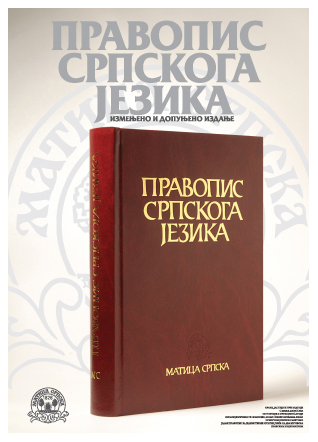 The Redaction Group composed of Mato Pižurica (chief redactor), Milorad Dešić, Branislav Ostojić and Živojin Stanojčić, has prepared the amended and supplemented edition of the Serbian Language Orthography, originally published by Matica Srpska in 1993 (with reprints in 1994 and 2002), whose main author was Mitar Pešikan, in cooperation with Jovan Jerković and Mato Pižurica. Reviewers for the first edition were Pavle Ivić and Ivan Klajn, and for the amended and supplemented edition Ivan Klajn and Drago Ćupić. The Redaction Group composed of Mato Pižurica (chief redactor), Milorad Dešić, Branislav Ostojić and Živojin Stanojčić, has prepared the amended and supplemented edition of the Serbian Language Orthography, originally published by Matica Srpska in 1993 (with reprints in 1994 and 2002), whose main author was Mitar Pešikan, in cooperation with Jovan Jerković and Mato Pižurica. Reviewers for the first edition were Pavle Ivić and Ivan Klajn, and for the amended and supplemented edition Ivan Klajn and Drago Ćupić.
As a project of Matica Srpska, organized by the Board for the Standardization of Serbian Language, current Orthography of Matica Srpska: (1) is reorganized (in the order of chapters it reverts to the traditional Belić's), (2) addenda not belonging to the problems of orthography have been left out, (3) the text was shortened, thoroughly reworked and restyled, (4) liberated from connections with the Orthography of the Serbo-Croatian Language by the two matica's from 1960, and from all relations with the Croatian standardization (without, of course, introducing relations with “new” languages)
(5) limited novelties have been introduced in almost all chapters, albeit in details in which the practice has refuted the existing rules, (6) is devoid of superfluous narrowly orthographic dualities, (7) an almost entirely new text on punctuation has been written, more complete and instructive; the segment on transcription has been supplemented with rules concerning Scandinavian languages; the text on writing English names has been replaced, and the parts concerning French and to and extent Slavic languages have been retouched and expanded, (8) the Dictionary accompanying the Orthography has been supplemented, above all, with the list of applications of orthographic rules in current material, (9) significantly more instructive details and illustrations supporting a more diverse functional literacy have been introduced, (10) in accordance with our tradition the new edition has preserved, and somewhat developed, the role of orthography as a referential linguistic advisor
Back to top

SERBIAN ENCYCLOPEDIA
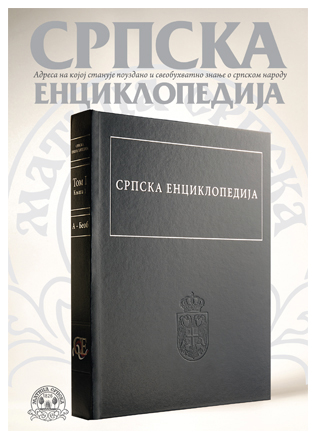 Matica Srpska and the Serbian Academy of Arts and Sciences, with the Institute for Textbooks as the executive publisher, have just released the first book of the first volume of the Serbian Encyclopedia (A – Beo). Thus began the realization of an idea of a national encyclopedia in ten volumes, an idea that was presented by Matica Srpska and the Serbian Academy of Arts and Sciences early in the 1990s. Matica Srpska and the Serbian Academy of Arts and Sciences, with the Institute for Textbooks as the executive publisher, have just released the first book of the first volume of the Serbian Encyclopedia (A – Beo). Thus began the realization of an idea of a national encyclopedia in ten volumes, an idea that was presented by Matica Srpska and the Serbian Academy of Arts and Sciences early in the 1990s.
Serbian Encyclopedia is a national encyclopedia of a general type, based on contemporary scientific and lexicographic taught. Its main goal is the collection, systematization and encyclopedic interpretation of the entirety of the historical development, and contemporary position of the Serbian nation. This publication systematically processes the cultural and historical legacy of the Serbian nation, and describes its contribution to the European and world culture and civilization. With clear goals, scientific approach and treatment of the matter, Serbian Encyclopedia aims to clarify all important issues from the past of the Serbian nation, and to present the material and general cultural values created in Serbian lands as well as in places where Serbs settled. Although the majority of its content is devoted to the treatment of all fields in the history of the Serbian nation, the encyclopedia is dedicated to the history and accomplishments of other nations with which the Serbs have been connected.
Serbian Encyclopedia describes the natural characteristics of the area in which the Serbian nation lives, as well as the specificities of the geographical position, geological composition and structure of soil, relief, hydrographic features, climate, and flora and fauna. It demonstrates the extent to which natural properties influenced the economic and demographic development, and existential, psycho-social and other characteristics of the population. This is primarily related to the area of Serbia as the motherland, and to other areas Serbs lived in, and continue to live in today as well.
Serbian Encyclopedia treats the economic development and contemporary status of the Serbian nation as important factors in the movement, particularities, and creative contributions in individual periods of social development. In the historical retrospective, it points out the causes of the unfavorable economic development, and the accomplishments of economic and social growth of the Serbian nation, and shows the total picture of the economic position both in certain industries and types of activities and in the territorial scheme from the state to the regional level.
Serbian Encyclopedia processes the culture, its particularities and accomplishments, daily life, customs, mentality, religion and other spiritual values of the Serbian nation. Scientific and historical evaluation of the spiritual legacy indicates the permeation with other cultures, both from the East and from the West, and especially with the cultures of nations whose members live with Serbs in Serbia or in neighboring states. By adopting a rational and critical approach to the entirety of the cultural legacy, accomplishments in all arts and sciences, and the technical and technological development, the encyclopedia enables the contemporary and future generations to perceive a realistic historical picture of the development and scope of Serbian spirituality, its values and significance for the modern world, and thus contributes to the validation of the historic and social consciousness of the Serbian nation.
Serbian history is filled with dramatic, tragical, and bright events, and their individual and institutional participants, leaders and creators also have a place in the encyclopedia. This implies the history of the great migrations, foundation, development and demise of states, ups and downs, wars, revolts, rebellions, and rare peaceful periods, struggles, victories and defeats, and the actors of these events and processes.
The Editorial Board, formed by the Serbian Academy of Arts and Sciences and Matica Srpska, takes care of all work in the making of the Serbian Encyclopedia. The Editorial Board, which performs all functions of the Central Editorial Office, has 24 members. Additional 114 associates, within 33 editorial offices, and 511 authors of the texts were hired. The Editorial Board is planning to publish the second book of the first volume, covering the remaining part of the letter B, in the following year.
Back to top

MATERIAL FOR THE LEXICON OF YUGOSLAV WRITERS
Project manager prof. Dr Ljiljana Pešikan-Ljuštanović
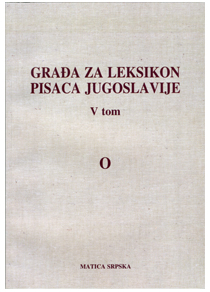 The project Lexicon of Yugoslav Writers (Leksikon pisaca Jugoslavije) was first started in 1960. The test volume was released in 1962, and in the period from 1972 till 1997 four volumes, edited by Živojin Boškov, have been published (1972, A–Dž; 1979, Đ–J; 1987, K–Lj; 1997, M–Nj). The project Lexicon of Yugoslav Writers (Leksikon pisaca Jugoslavije) was first started in 1960. The test volume was released in 1962, and in the period from 1972 till 1997 four volumes, edited by Živojin Boškov, have been published (1972, A–Dž; 1979, Đ–J; 1987, K–Lj; 1997, M–Nj).
Lexicon of Yugoslav Writers is of an exclusively biographic-bibliographic nature – data is presented without analysis and evaluation. Each article consists of three parts: the first one is biographic, the following two parts are bibliographic and feature a select bibliography of the writer and literature concerning his/her work. The focus is placed on the thoroughness in the presentation of data, thus the volume of individual entries is not limited by the number of lines or the significance of a writer. Lists of histories of literature, encyclopedias and lexicons not mentioned in articles on individual writers, lists of periodicals mentioned in the articles and the overview of foreign names in original spelling and in Serbian transcription, are given at the end of each volume.
Lexicon of Yugoslav Writers contains bio-bibliographic data on writers from the entire territory of Yugoslavia, from the beginnings of Slavic literacy to modern times. It features writers born in the territory of Yugoslavia who lived abroad and wrote both in their native and in foreign languages, and those members of Yugoslav nations who were born and have worked abroad as well. Apart from those who created works of literature, the Lexicon contains entries on literary critics, theoreticians and historians of literature, translators, chroniclers and old transcribers.
The material published in first four volumes encompasses the entire territory of former Yugoslavia. The dissolution of the state which happened in the nineties has had its effect on the conception of the Lexicon. On the session of the Editorial and Redaction Boards, held on April 16th 2009, a decision was made to publish parts of the material in the possession of the Redaction of the Lexicon under the title Material for the Lexicon of Yugoslav Writers, letters O and P. This will end long-standing concerns which plagued this project, and whose consequence was the long hiatus in the publishing of the Lexicon. Regardless of the length of this hiatus, and the eventual anachronism which it imposes, the Editorial and Redaction Boards were of the opinion that a complete termination of the project and non-publication of gathered and prepared material would cause irreparable damage. With respect to their volume and exhaustiveness, entries in the Lexicon of Writers do not have a replacement in any of the existing lexicographical publications. Furthermore, the Lexicon is a unique treasure trove of so called “small” writers who, as a rule, are not featured in other literary lexicons. For all this reasons the Redaction and Editorial Board have made a decision to publish the existing materials, albeit with necessary supplements, in three volumes, and to plan in parallel future publishing of the Lexicon of Serbian Literature (Leksikon pisaca srpske književnosti), which could in part rely on the material already gathered and published.
First of the three remaining volumes of Material for the Lexicon of Yugoslav Writers was released in September 2010. The material encompasses 193 entries beginning with the letter O, along with supplementary lists of histories of literature, periodicals and abbreviations; it was consolidated, supplemented and processed during 2009. and 2010. Since it is only the material for the Lexicon, it was decided that the otherwise valuable illustrative materials should not be published. It was decided that this material should be placed on the internet, so as to make it available to all interested users.
Redaction Board
Elected on the session of the Managing Board of Matica Srpska, March 16th 2009
Prof. dr Ljiljana Pešikan-Ljuštanović, Editor in Chief
Prof. dr Marija Kleut
Prof. dr Slavko Gordić
Prof. dr Svetlana Tomin
Hermina Ležimirac
Vladimir Nikolić
Mirjana Karanović, Redactor
Svetlana Milašinović, Secretary of the Redaction Board
E-mail: lpj@maticasrpska.org.rs
Editorial Board
Prof. dr Zlata Bojović
Prof. dr Slavica Garonja-Radovanac
Prof. dr Ivana Živančević-Sekeruš
Prof. dr Goran Maksimović
Prof. dr Damnjan Petrović
Prof. dr Svetlana Tomin
Prof. dr Jovan Popov
Doc. dr Dragana Vukićević
Doc. dr Branka Jakšić-Provči
Doc. dr Gorana Raičević
Dr Snežana Šarančić-Čutura
MR Zorica Hadžić
MR Nataša Polovina
MR Nevena Varnica-Nenin
MR Đorđe Despić
Štefan Hudak
Back to top

Fourth internatioal scientific meeting
Mycology, mucotoxicology and mycosis 20–22 April 2011
Matica Srpska's department for natural sciences is organizing the fourth international scientific meeting Mycology, mycotoxicology and mycosis, which will be held in Matica Srpska's headquarters in Novi Sad on April 20–22 2011. This meeting is, as were the previous three (2005, 2007, 2009), of an interdisciplinary character and will feature presentations of scientific results from numerous domestic and foreign researchers in the field of mycology and mycotoxicology of food for humans and animals, food products in all fazes of production, storage and transport, and diseases these toxic metabolites cause in humans and animals. Some of the works will be dedicated to the ecological aspect, mycosis of humans, animals and plants, and useful fungi used as starter cultures in fermentation technologies. According to research conducted in our country and according to data from domestic and international sources, a constant presence of mycotoxins as secondary metabolites of molds has been observed in cattle feed and food products of plant and animal origin used in human diet.
In recent years, due to climate changes and temperature stresses, a more frequent appearance of mycotoxins has been observed, especially in grain. Vojvodina, as the largest grain producer in our country, foremost of corn and wheat, is vitally interested in the results of said research, since previous mycotoxicological research showed that precisely these grain products are most frequently contaminated with mycotoxins. Farming in our country is suffering great economical damages due to mycotoxins, and a particular problem is the bioresidue of some mycotoxins which remain, for shorter or longer periods, in animal organs and tissue which are used in human diet. The problem of mycosis in humans and animals is a constant presence in human and veterinary medicine. This scientific meeting should observe the volume of mycotoxin contamination in foods of plant and animal origin, the degree of threat to human and animal health caused by mycotoxins and the volume of their distribution.
The findings will be presented in four thematic units: Mycology; Mycotoxins in food products and animal feed; Mycotoxicosis of humans, animals, and plants; Mycosis in humans, animals, and plants. Reviewed works will be published in the Matica Srpska Proceedings for Natural Sciences, which will be published prior to the meeting, as the previous three times.
Members of the Organization Committee for the Meeting are: prof. dr Marija Škrinjar (President), doc. dr Ferenc Bagi, prof. dr Jelena Vukojević, dr Slavica Vesković Moračanin, academician Dragutin Đukić, Mirjana Zrnić (Secretary), dr Dobrila Jakić Dimić, academician Rudolf Kastori, prof. dr Ida Leskošek Čukalović, dr Jelena Lević, prof. dr Milan Matavulj, prof. dr Stevan Maširević, prof. dr Radmila Resanović, and prof. dr Smiljka Šimić.
Download the document: MIKOZA eng
Back to top
|












